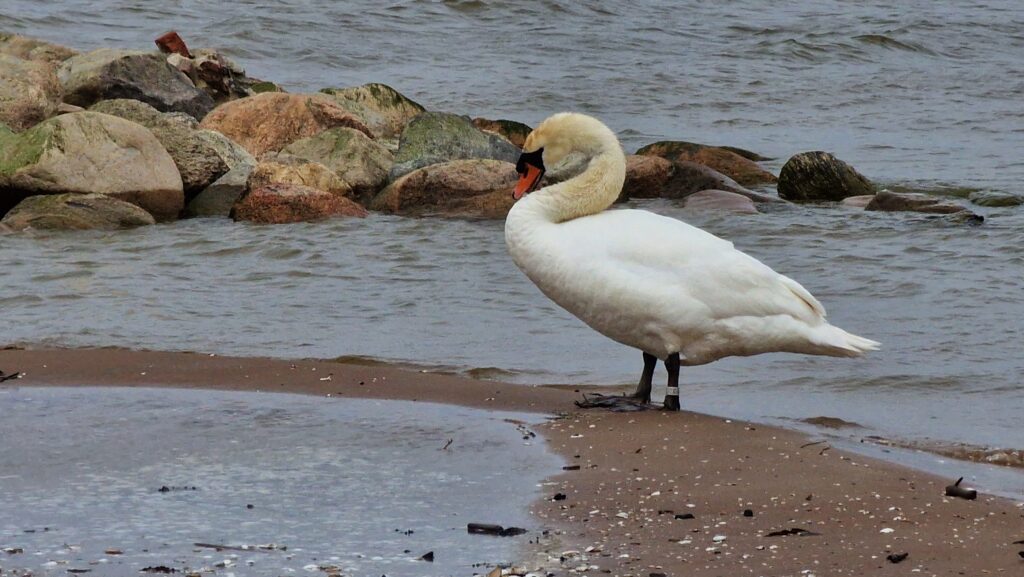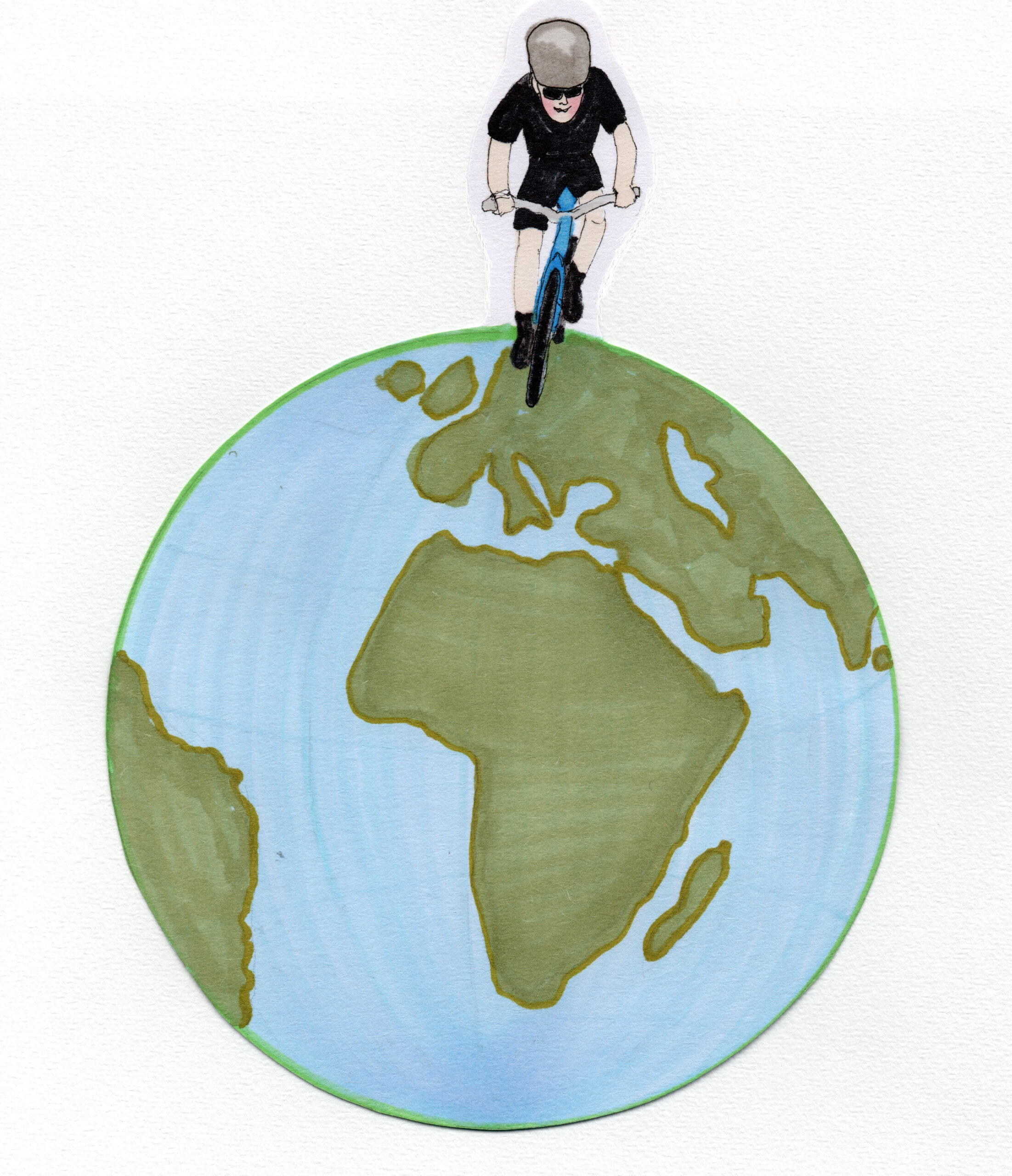A day which started with rain showers turned nice again in the afternoon. Due to the rain, the cycling day started late, and I made it to Dundaga and Cape Kolka and to a camping ground to the south of the Cape. The day ended after 59 km with a visit to an unusual collection and a night in a small wooden cabin.
Heavy drops were crashing on the roof of the house above me and I knew that I would have time to turn one more time around and try to get some sleep. I am not going to cycle in such a downpour I self-suggested. Still, I had to get up at one point because breakfast with my former colleague had been agreed at 8:00 am. I packed my panniers and brought them down to the door of the house I was sleeping in. Breakfast was ready. Fresh radishes, which had been still in the soil half an hour before, were looking invitingly up to me in their rosy colour. Bread with sausages and melted cheese on top promised to deliver, beside the excellent taste, also sufficient amounts of carbohydrates to sustain me in my cycling efforts.
It was almost noon when the rain abated and I finally swung onto “Monica”, my bike. The first destination of the day was Dundaga, a small town with an 13th century castle and an interesting sculpture with an even more interesting background. Back on the gravel road, I didn’t have to deal with the dust anymore, but now it was mud. Cycling on a very wet gravel road will make you an outcast in the human society, at least from a hygienic point of view. Dundaga castle was a typical nobleman’s residence, but from the old 13th century fortress nothing was visible anymore. It was nicely located, and the gate-tower and courtyard still made a fortified impression. The other sight in Dundaga was of much more recent origin: a life-sized Australian saltwater crocodile. The white elephant in the room was of course the question: why is there a sculpture of an Australian saltwater crocodile in the deepest province of Latvia? The answer is that one of the most famous crocodile hunters of Australia was a certain “Crocodile Harry” (Arvids Blumentals) who came from Dundaga. So, to commemorate all the strong men of Dundaga, and “Crocodile Harry”, the city council decided to erect this mean and ferocious looking sculpture. It is even whispered that “Crocodile Harry” served as the role model for the film “Crocodile Dundee”.


Next on my list was Cape Kolka, the cape which separates the Baltic Sea from the Gulf of Riga. The shoals of the cape stretch out into the sea for more than 5 km, and it is said that the shoals around Cape Kolka are harbouring the biggest shipwreck graveyard in the Baltic Sea. The cape was a rough piece of land, where recent storms had uprooted many pines. A very dramatic and picturesque setting, and, although the sea was calm, you wouldn’t think that in storms the waves can reach 7 m of height here.


From Cape Kolka I cycled south, trying again to find a stealth campsite. But again, I was in a national park and therefore stealth camping was out of the question. After a while, I found a little place called Purvziedi in Vaide, where an old forester had established a collection/museum of antlers he had mainly found in the forests during his work. The collection was pretty bizarre, with antlers made into chairs or the one moose antler whose skull, and the wires in which it got caught, were still attached. I rented a little cabin at the attached campground and returned to civilization by watching a football game. Sometimes it is important to go back to the mundane little things.



I have stealth camped in our National Parks and never been bothered … a few feet off the road and only the critters to fear. Worst case I suppose the authorities would arrest me but more likely they would be understanding of the situation. Better to be off the roads at night.